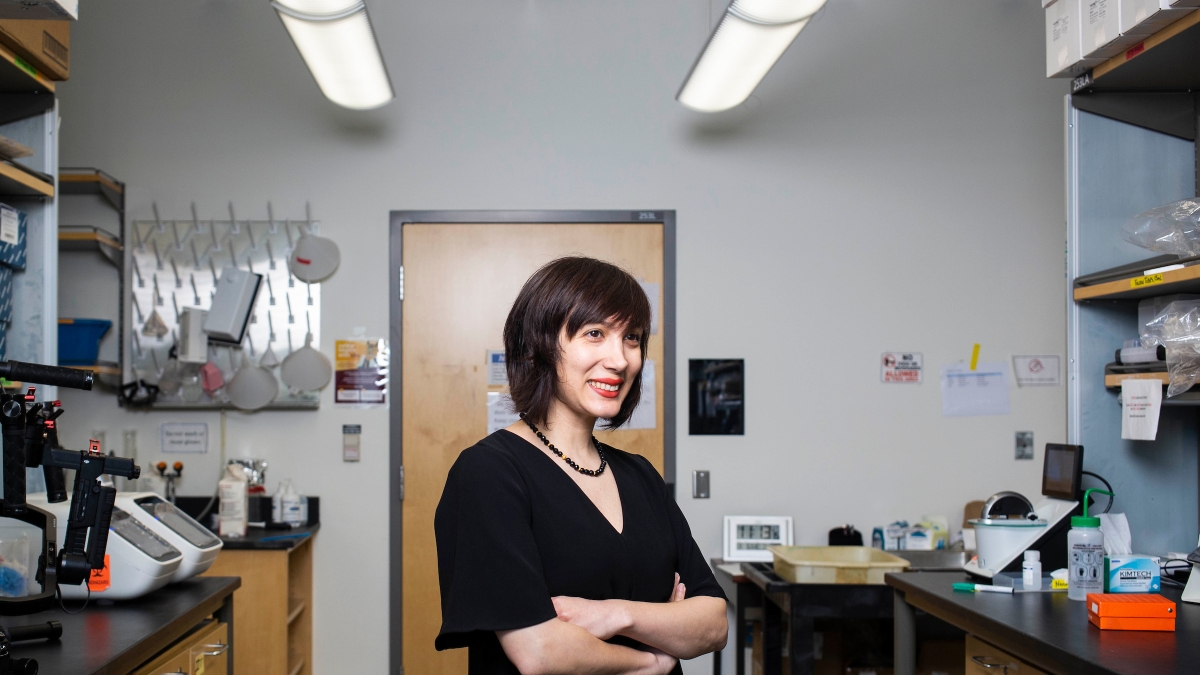Last week, scientists began the first human clinical trials using the gene-editing tool CRISPR to combat cancer and blood disorders. Researchers remove some of a person’s cells, edit the DNA, and then inject the cells back in, where hopefully they will cure the diseases.
The technology hit the world stage in 2012, with the promise of curing more than 6,000 known genetic diseases. Samira Kiani is a health systems engineer at Arizona State University, where her lab works on using CRISPR and synthetic biology to create safe and controllable CRISPR gene therapies.
ASU Now talked with Kiani, an assistant professor in the School of Biological and Health Systems Engineering, about the trials.
Question: Do scientists fully understand the changes they’re making?
Answer: What I gather from these clinical trials is obviously they are based on years of preclinical studies that have been done in itself and in the animal models. The targets they have chosen in the blood disorders, these are two monogenetic diseases. There have been many studies before using CRISPR to target these genes that are responsible for these diseases in the cells and in the animal models. The exact modification they want to do in these patients, yes, it’s well-studied. How this is going to affect patients — because this is the first clinical trial — obviously that’s something we all have to wait and see.
Q: What are some of the obstacles to success in these trials?
A: The very first obstacle is how efficiently you can modify these cells outside the patient body. You get these cells, you introduce CRISPR to them and then you really have to hope for really high efficiency in repairing the type of disease abnormality they have. Usually, as you can imagine, the efficiency (of CRISPR) to really cut the genome and repair the disease genes is not 100%. One obstacle is to increase this efficiency. People are doing work to increase that efficiency. Obviously we are not there yet.
The other obstacle is that once you have a number of cells edited, how can you expand those? How can you make sure you expand those outside the patient body? That expansion strategy is very much challenged right now, so a lot of people are working on that. We are not there yet.
Q: If these trials are successful, what’s next?
A: If these types of trials are successful, one of the major advances for CRISPR would be if we could avoid getting the cells and modifying them outside of the body, and really move forward and modify these cells inside the patient body. You can imagine it’s very costly and also time consuming to get these cells from the patient, expand them outside the body, modify them, and infuse them back, you really need to have a really special facility and a lot of money is involved. You really want to be able to put the CRISPR directly in the patient and see your intended changes. Some of the clinical trials are already intended for this purpose.
Top photo: Assistant Professor Samira Kiani poses for a portrait in her lab in the School of Biological and Health Systems Engineering. Photo by Deanna Dent/ASU Now
More Science and technology

Google grant creates AI research paths for underserved students
Top tech companies like Google say they are eager to encourage women and members of historically underrepresented groups to consider careers in computer science research.The dawn of the era of…

Cracking the code of online computer science clubs
Experts believe that involvement in college clubs and organizations increases student retention and helps learners build valuable social relationships. There are tons of such clubs on ASU's campuses…
Consortium for Science, Policy & Outcomes celebrates 25 years
For Arizona State University's Consortium for Science, Policy & Outcomes (CSPO), recognizing the past is just as important as designing the future. The consortium marked 25 years in Washington, D…
